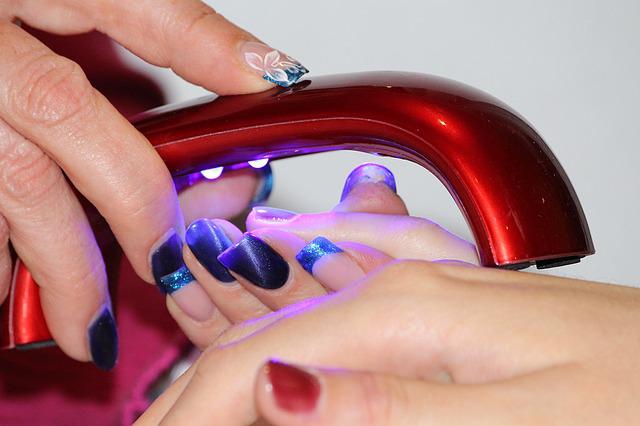You're probably no stranger to the discomfort and frustration of ingrown toenails. But have you considered that your nail care routine might be part of the problem? If you're still using manual clippers or scissors to trim your toenails, you may be inadvertently setting yourself up for more ingrown toenails. Electric trimmers, on the other hand, offer a more precise and hygienic way to trim your nails, reducing the risk of accidental cuts and irritation. But what makes them so effective, and how can they help you prevent ingrown toenails for good?
Benefits of Electric Trimmers
Your electric trimmer's precise cutting abilities and adjustable features make it an effective tool for safely and easily managing ingrown toenails. With an electric trimmer, you can carefully trim the nail, removing any sharp edges or points that may be digging into your skin. This helps to prevent further irritation and inflammation, allowing the ingrown toenail to heal more quickly.
Using an electric trimmer is also more hygienic than using nail clippers or scissors, as the electric trimmer's cutting head is designed for individual use and can be cleaned and disinfected easily. Additionally, electric trimmers often come with different attachments for various nail types and conditions, making them versatile tools for at-home nail care. You'll be able to effectively trim and shape your nails with ease, helping to prevent ingrown toenails from occurring in the future. All in all, incorporating an electric trimmer into your nail care routine can make a big difference in managing and preventing ingrown toenails.
Causes of Ingrown Toenails
While electric trimmers can help manage and prevent ingrown toenails, understanding what causes them in the first place is key to effective prevention, so let's take a look at the common causes of ingrown toenails. Ingrown toenails occur when the edges of your nail grow into the surrounding skin, causing pain, redness, and swelling. You might be more prone to ingrown toenails if you have naturally curly or thick nails, as these can be more likely to dig into your skin.
Your daily habits can also contribute to ingrown toenails. For example, if you wear tight shoes that put pressure on your toes, this can cause your nail to grow into the surrounding skin. Similarly, if you don't trim your toenails properly, this can also lead to ingrown toenails. Trimming too short or at an angle can cause the nail edge to dig into your skin, increasing the risk of an ingrown toenail. By understanding these causes, you can take steps to prevent ingrown toenails from occurring in the first place.
Advantages Over Manual Trimmers
Several key benefits make electric trimmers a more attractive option than manual trimmers for managing ingrown toenails. You'll find that electric trimmers are easier to maneuver, especially if you have limited dexterity or flexibility in your hands or feet. They also reduce the risk of accidental cuts, which can be painful and lead to infection. With electric trimmers, you can precision-cut your toenails without applying too much pressure, which can exacerbate ingrown toenails.
Another advantage of electric trimmers is their ability to trim toenails quickly and efficiently. You won't need to spend as much time struggling to cut through thick or hard nails, which can be a challenge with manual trimmers. This is especially beneficial if you have multiple ingrown toenails that need attention. Additionally, electric trimmers often come with interchangeable heads or attachments, allowing you to customize your trimming experience. Overall, electric trimmers offer a convenient, safe, and efficient way to manage ingrown toenails, making them a superior choice to manual trimmers. By switching to electric trimmers, you'll be better equipped to prevent and alleviate the discomfort associated with ingrown toenails.
Features to Look for Purchase
When shopping for an electric trimmer to manage ingrown toenails, you'll want to look for a few key features that guarantee a safe, efficient, and effective trimming experience. First, consider the trimmer's power source – cordless or corded? Cordless trimmers offer greater portability, but you'll need to confirm the battery life meets your needs. Corded trimmers, on the other hand, provide consistent power, but you'll be tethered to a power outlet.
You'll also want to check the trimmer's blade type and material. Look for stainless steel or titanium blades, which are durable and resistant to corrosion. A curved or angled blade is also beneficial, as it allows for precise trimming around the toenail bed. Additionally, consider the trimmer's adjustable features, such as adjustable speed and trim length. This will enable you to customize the trimmer to your specific needs. Finally, check for any safety features, such as a protective guard or automatic shut-off, which will help prevent accidents and confirm a smooth trimming experience.
Reducing Ingrown Toenail Risk
To minimize the risk of ingrown toenails, how can you adapt your trimming technique to promote healthy nail growth and prevent future problems? One way is to trim your toenails straight across, without cutting them too short. You can also file your nails to smooth out any rough edges. When you use an electric trimmer, it's easier to get a precise cut and avoid cutting yourself.
You can also reduce your risk of ingrown toenails by taking good care of your feet. Wash your feet daily and dry them thoroughly, especially between the toes. If you have sweaty feet, consider using an antifungal powder to keep your feet dry.
Additionally, consider wearing shoes that fit properly and don't put too much pressure on your toes. Avoid sharing personal care tools, such as nail clippers and files, to prevent the spread of infection. By adapting your trimming technique and taking good care of your feet, you can reduce your risk of ingrown toenails and enjoy healthy, pain-free feet.
Electric Trimmer Safety Tips
As you incorporate electric trimmers into your nail care routine to reduce ingrown toenail risk, it's equally important to use these devices safely to avoid accidents and injuries. You'll want to handle them with care, guaranteeing your fingers don't come into contact with the cutting edges. To avoid accidental starts, make a habit of unplugging your trimmer when not in use or when changing the bits.
Additionally, you should prepare your nails before trimming. Clean and dry your feet thoroughly, removing any oils or lotions that may interfere with the trimmer's operation. Trim straight across your toenail, following the natural curve of your toe. Refrain from cutting too short, as this can increase the risk of ingrown toenails. It's also essential to clean your electric trimmer regularly to prevent bacterial buildup. By following these safety guidelines, you'll minimize the risk of injury and guarantee a safe nail care experience with your electric trimmer.
Effectiveness for Thick Toenails
Thick, hardened toenails can be a challenge for traditional nail clippers, but electric trimmers offer a precise cutting action that helps you tackle even the toughest nails with ease. You'll find that electric trimmers slice through thick toenails smoothly, allowing you to carefully shape and trim the nail without applying excessive pressure. This is particularly beneficial if you have trouble maneuvering clippers or struggle with reduced hand strength.
Electric trimmers also reduce the risk of cracking or splitting the nail, which can lead to ingrown toenails or infection. By providing a clean, precise cut, you minimize the chance of nail breakage and further complications. Additionally, many electric trimmers come with adjustable thickness settings, allowing you to customize the cut to your specific needs. Whether you're dealing with thick, fungal-infected nails or naturally hard toenails, electric trimmers offer an efficient solution for safe and effective trimming. This makes them an ideal choice for individuals with thicker toenails who want to maintain healthy, well-groomed feet.
Nail Trimming Best Practices
When using electric trimmers, you should regularly follow proper nail trimming techniques to maintain healthy toenails and prevent ingrown toenails. To start, you'll want to trim your toenails straight across, without cutting at an angle or down the sides. This helps prevent the nail from growing into the skin, which can cause ingrown toenails.
You should also trim your toenails to the right length. Cutting them too short can cause pressure on the skin around the nail, leading to ingrown toenails. On the other hand, leaving them too long can cause friction and irritation. A good rule of thumb is to trim your toenails so that they're even with the tip of your toe.
Additionally, you should avoid sharing your electric trimmers with others to prevent the spread of infection. It's also a good idea to disinfect your trimmers after each use to keep them clean and hygienic. By following these best practices, you can help keep your toenails healthy and prevent ingrown toenails.
At a Glance
You've seen why electric trimmers are the best option for managing ingrown toenails. They offer precise cutting, adjustable features, and hygiene benefits that manual trimmers can't match. By choosing the right electric trimmer and following safety tips and best practices, you'll reduce your risk of ingrown toenails and enjoy healthier, happier feet. With their convenience and effectiveness, electric trimmers are a game-changer for at-home nail care, making it easy to take control of your foot health.






